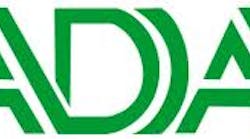New analysis released by the American Dental Association indicates that overall spending on dental care has remained flat in recent years, despite the fact that per patient dental spending by Baby Boomers and seniors increased.
Two research briefs released by the ADA’s Health Policy Resources Center bolster previous statistics showing that adult dental visits have been declining from 2000 to 2010, leading to less spending on dentistry and oral care. Significantly, the declines in both dental spending and visits predate the economic crisis of 2008.
“Our results suggest very strongly that the dental economy is in a major transition,” wrote Dr. Marko Vujicic, Ph. D., managing vice president of the HPRC and lead author of the briefs. “Dental spending has not rebounded since the end of the Great Recession and has been stagnant, on a per capita basis, since 2008.”
In 2011, dental spending accounted for 4 percent of overall national health expenditures, down from 4.5 percent in 2000, according to HPRC analysis of data gathered from the Center for Medicare and Medicaid Services, the Bureau of Economic Analysis and the U.S. Census Bureau.
The rate of growth of dental spending has also slowed in recent years. Between 1990 and 2002, per capita dental spending grew by 3.9 percent per year after adjusting for inflation, a rate that fell to 1.8 percent between 2002 and 2008. Since 2008, the per capita dental expenditure growth rate declined 0.3 percent while overall health spending grew by 1.6 percent.
According to a previous HPRC brief, in 2003 41 percent of adults reported going to the dentist during the prior year. That figure declined to 37 percent in 2010. Children, however, visited dentists more often between 2003 and 2010, but since their dental care tends to be less expensive than adults’, it did not result in greater dental spending overall.
While overall dental expenditures have remained flat, the HPRC analysis shows there’s more to the story –spending by Baby Boomers and the elderly is on the rise. Between 2000 and 2010, seniors’ annual spending on their dental care increased from $655 to $796. The HPRC credits the increase to advances in preventive and restorative dental care, leading to greater numbers of elderly retaining their teeth.
“Thanks to greater understanding of the importance of oral health and mouth healthy measures such as water fluoridation, the dental well-being of Americans has improved in recent decades,” said Dr. Robert A. Faiella, president of the ADA. “According to the Centers for Disease Control, the number of adults missing all or some of their teeth dropped from 50.2 percent in 1999 to 43.6 percent in 2010. But as positive as this trend is, the fact fewer adults are utilizing dental care jeopardizes that progress. Financial barriers to care are up among young adults, and the number of people who visit the ER for their dental care is rising. We need to find creative solutions to improve access to care for millions of Americans and reverse these recent trends.”





